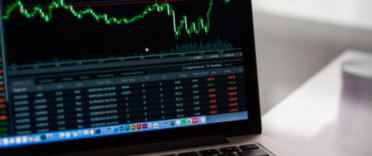The 135th episode of my weekly YouTube show where I discuss what is happening in investment markets and what to look out for. This week I talk about the FTSE 100 and how it has made a strong start to the year as well as how the pound has strengthened against the US dollar.
Each show lasts between 5-10 minutes and is aimed at DIY investors (including novices) seeking contemporary analysis to help them understand how investment markets work.
Subscribe to my YouTube channel to receive my weekly analysis of investment markets or alternatively, you can listen via my weekly Midweek Markets podcast below.
Midweek Markets weekly podcast
Other ways to watch, listen and subscribe
You can listen to other episodes and subscribe to the show by searching 'Money to the Masses' on Spotify or by using the following links:
Abridged transcript - Midweek Markets episode 135
Last week was all about the tech wreck as technology stocks slumped as investors sold en masse and bought reflation assets. That means rotating into equity sectors such as financials and energy, which is why the FTSE 100 held up so well by comparison to its US counterparts.
By the end of last week, it was the Nasdaq 100’s worst weekly performance since February 2021 and somewhat ominously its worst start to a year since the year 2000 when the tech bubble of the 1990s finally popped. Growth stocks continued to fall out of favour with investors flocking to cyclical/value stocks. With the reflation trade in full swing and optimism over the outlook for the pandemic, even airlines stocks surged.
Meanwhile, the FTSE 100 finished the week down just 0.5% benefiting from its exposure to energy and financials while at the same time lacking any notable exposure to the beleaguered technology sector. It's once again a value vs growth story globally, with value outperforming so far in 2022.
But despite the minor pullback and the rotation in stock markets, it is presumptuous to draw too many conclusions from the first week of trading especially when markets finish in the red as they did last week. Nonetheless, some people still try to. Research in the US claims that when the S&P 500 rises during the first five trading days of the year then the index has finished the year in positive territory 82% of the time. When the first five trading days result in a loss then the odds of a positive year on the S&P 500 drops to 52%, basically a coin toss. Make of that what you will.
Come Monday the situation didn’t improve for US equities with bond yields continuing to push higher, the 10 year US treasury yield briefly climbed above 1.8% to its highest level in two years before pulling back. The sell-off in tech stock accelerated and the Nasdaq Composite briefly fell into correction territory (the Nasdaq 100 managed to avoid that dishonour) before a powerful mid-day rebound saw US equity indices finish broadly flat on the day.
At one point on Monday the S&P 500 broke below not only 4700 but also briefly below 4600. It has since recovered to once again be sitting just above 4700 as I make this show. It means that the levels I said to watch are back in play as levels of support. If we break below 4600 again then all eyes will be on the December lows of 4500 to 4530. But for now, the bull market and uptrend in US stocks are still very much intact if a little bloodied. Investors still seemingly have faith that central banks won’t let equity markets collapse and so continue to buy any dip.
Interestingly the equity shakedown continues to be US-focused, especially in the tech sector. Year to date the Nasdaq 100 is down 2.54% while the S&P 500 is down almost 1%. Meanwhile, European equities are broadly flat while the FTSE 100 is up 2.26%. Will 2022 finally be the year when UK and European equities outperform US equities? To give this some context the FTSE 100 has only outperformed the S&P 500 once in the last 10 years on a price basis and that was in 2017
On Wednesday news that US inflation has soared 7% for the first time since 1982 didn’t accelerate the recent reflation trade rotation, partly a result of the testimony from US Federal Reserve Jerome Powell in front of the United States Senate. So for now the market has entered a holding pattern over the last 24 hours.
Interestingly some movements in bond and currency markets are starting to suggest that concern is increasing that central banks will raise interest rates too aggressively in 2022, especially in the US. If this proves to be the case then that could kill the bull market.
But before I finish, UK investors may have noticed that the pound has strengthened against the US dollar and has not only recaptured the important $1.363 but now sits at $1.374, meaning that momentum has shifted in favour of further strengthening. This will have implications for your overseas holdings in US equities but could eventually prove a headwind for the FTSE 100, which has been so resilient year to date.




